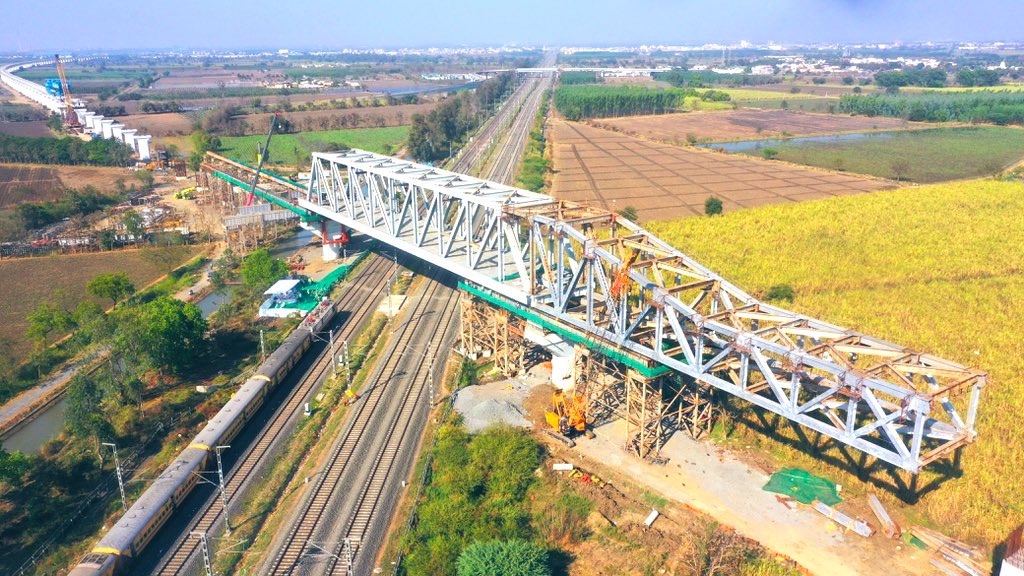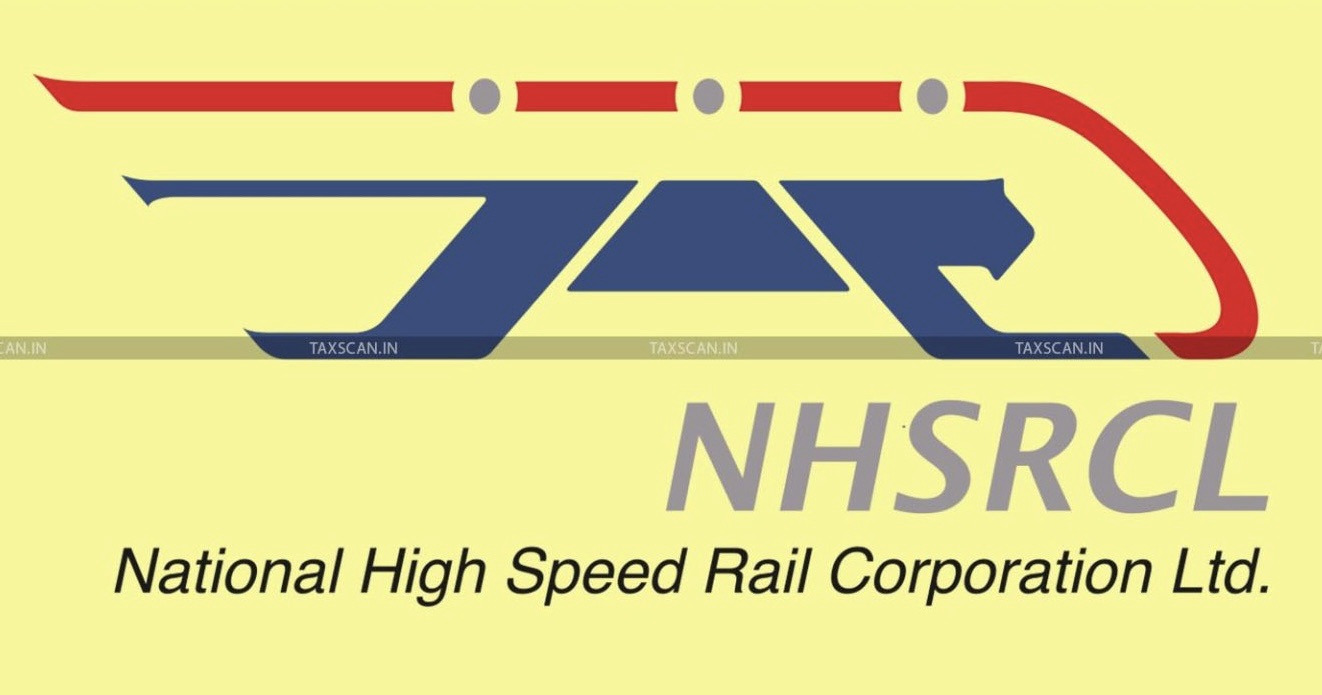100-Meter-Long Steel Bridge Constructed on Four Railway Tracks in Surat for Mumbai-Ahmedabad Bullet Train Project
The National High-Speed Rail Corporation Limited (#NHSRCL) has constructed a steel bridge over four railway tracks—two of Western Railway and two Dedicated Freight Corridor Corporation (#DFCC) tracks—between Kim and Sayan for the Mumbai-Ahmedabad Bullet Train project.
This bridge consists of two spans – 100 meters and 60 meters – facilitating a dual-line standard gauge rail track. This significant infrastructure development involves crossing four major tracks—two of Western Railway and two of DFCCIL—as well as an irrigation canal. The 100-meter span was launched over the Western Railway and DFCC tracks between January 28, 2025, and February 5, 2025, while the 60-meter span will be constructed over the irrigation canal near the track.

For the construction of the 100-meter-long steel bridge, weighing 1,432 metric tons, an 84-meter-long launching nose weighing approximately 525 metric tons was used.
This 100-meter steel bridge, with a width of 14.3 meters and weighing 1,432 metric tons, was fabricated at an RDSO-approved workshop in Bhuj, Gujarat, and transported to the site via road for installation. The 100-meter span was assembled at a temporary structure at the Ahmedabad end of the site, 14.5 meters above the ground, and was pulled using 50 mm diameter Mac-Alloy bars with a semi-automatic mechanism featuring two 250-ton capacity jacks. The pier height at the construction site is 12 meters.
Approximately 60,000 torque-shear type high-strength (TTHS) bolts were used for the 100-meter span bridge assembly, designed for a lifespan of 100 years. Both spans of the bridge have been painted using the C5 system painting and will be placed on elastomeric bearings.
The bridge launching was carried out with intermittent traffic blocks on both Western Railway and DFCCIL tracks. These traffic blocks were necessary to ensure the safety and precision of the bridge launch and were planned in phases to minimize disruptions to regular train and freight services.
This project is being executed with meticulous planning, maintaining the highest standards of safety and engineering excellence. Leveraging Japanese expertise, India is rapidly utilizing its own technical and material resources under the “Make in India” initiative for infrastructure development. The construction of steel bridges for the bullet train project is a prime example of this effort.
This is the sixth steel bridge out of the 17 planned for the Gujarat section of the corridor. Five steel bridges of lengths 70 meters, 100 meters, 230 meters (100 + 130 meters), 100 meters, and 60 meters have already been completed at Surat, Anand, Vadodara (Mumbai Expressway), Silvassa (Dadra & Nagar Haveli), and Vadodara, respectively.


